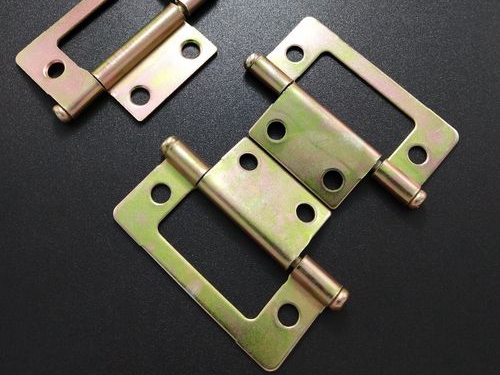Protecting Metal Parts Against Corrosion with Galvanizing
Introduction
Galvanizing is a highly effective method of protecting metal parts against corrosion by applying a durable zinc coating. By forming a metallurgical bond with the underlying steel, galvanizing provides long-lasting, sacrificial protection that significantly enhances component durability, prevents rust formation, and reduces maintenance requirements.
Globally, galvanizing remains the preferred corrosion protection method across various sectors, including construction, automotive, industrial infrastructure, and renewable energy. The growing demand for sustainable and maintenance-free corrosion protection solutions underscores galvanizing's importance in modern manufacturing and construction practices.
Galvanizing Process Overview
Key Steps in Pretreatment
Surface cleaning and degreasing to remove contaminants
Acidic pickling to eliminate rust, mill scale, and oxides
Fluxing to promote optimal zinc-metal bonding
Comparison of Core Technologies
Technology | Process Method | Typical Coating Thickness | Typical Applications | Efficiency |
|---|---|---|---|---|
Hot-Dip Galvanizing | Immersion in molten zinc | 50–200 µm robust coating | Structural steel, construction materials | High |
Electro-Galvanizing | Electroplating process | 5–15 µm precise coating | Automotive parts, consumer electronics | Moderate-High |
Sherardizing | Zinc diffusion coating (heated zinc powder) | 15–75 µm uniform coating | Small precision parts, fasteners | Moderate |
Post-processing and Optimization
Cooling and quenching for coating stabilization
Inspection for coating thickness and uniformity
Application of passivation or sealants for extended protection (optional)
Galvanizing: Advantages and Limitations
Brief Introduction: Galvanizing provides superior corrosion resistance through a durable zinc coating, dramatically extending the lifespan of metal parts. However, process limitations include dimensional impact due to coating thickness and potential for coating irregularities if improperly controlled.
Property | Advantage / Limitation | Remarks and Typical Values |
|---|---|---|
Corrosion Resistance | Excellent long-term protection | ASTM B117 Salt Spray Resistance: >1500 hrs achievable |
Surface Durability | Exceptional durability | Coating life expectancy typically >25–50 years |
Adhesion Strength | Strong metallurgical bond | Zinc layer metallurgically bonded to substrate |
Dimensional Impact | Moderate dimensional increase | Typical coating thickness: 50–200 µm |
Maintenance | Minimal maintenance requirements | Significantly reduced maintenance frequency |
Environmental Impact | Environmentally friendly coating process | Zinc recyclable, low environmental impact |
Industrial Applications of Galvanizing
Examples include:
Construction Industry Galvanizing in construction is extensively used for structural steel beams, roofing, and fences, providing decades of corrosion-free service (service life typically increased by >30 years).
Automotive Industry Automotive body parts and chassis components benefit from electro-galvanizing, offering uniform corrosion protection and precise dimensional control (corrosion protection increased by 70–90%).
Renewable Energy Sector Components in solar and wind energy systems utilize galvanizing to withstand harsh outdoor conditions, significantly extending equipment lifespan and reliability (corrosion resistance extended to 20–40 years).
Industrial Infrastructure Bridges, railings, and other heavy industrial infrastructure rely on hot-dip galvanizing for long-lasting corrosion protection, dramatically reducing maintenance and lifecycle costs (maintenance reduced by >80%).
Galvanizing Process Selection Guide
Material Adaptability Matrix
Substrate Type | Manufacturing Process | Recommended Galvanizing Process | Performance Gain Focus |
|---|---|---|---|
Hot-Dip Galvanizing | Maximum corrosion protection, high durability | ||
Electro-Galvanizing | Precise dimensional coating, moderate corrosion resistance | ||
Hot-Dip Galvanizing | Durable coating, enhanced rust resistance | ||
Sherardizing or Electro-Galvanizing | Uniform protection, minimal dimensional impact |
Key Criteria for Evaluating Galvanizing Suppliers
Equipment Capability: Evaluate the supplier’s galvanizing baths for size capability, coating thickness control, and process consistency.
Process Certification: Verify compliance with international galvanizing standards (ASTM A123, ISO 1461) and environmental regulations.
Test Reports: Request coating thickness measurements, corrosion resistance test results (ASTM B117), and adhesion testing data.
Surface Treatment Technology Classification Matrix
Technology | Main Function (Specific & Comprehensive) | Key Features | Advantages |
|---|---|---|---|
Superior corrosion protection, surface durability | Coating thickness: 50–200 µm, corrosion protection >25 years | Long-term corrosion resistance, minimal maintenance | |
Surface preparation, coating adhesion | Thickness: 1–7 g/m², moderate corrosion resistance | Excellent paint adhesion, corrosion protection | |
Aesthetic enhancement, corrosion resistance | Thickness: 0.5–250 µm, Salt Spray: >1000 hrs achievable | Outstanding aesthetics, high durability | |
Moderate corrosion resistance, aesthetic matte finish | Thickness: 0.5–2 µm, Salt Spray: ~200–400 hrs | Minimal dimensional impact, matte finish |
Technical Suitability Assessment (Galvanizing-Specific)
Four-Dimensional Assessment Model:
Material Compatibility: Highly compatible with carbon steel, low-alloy steel, cast iron, and select tool steels.
Performance Requirements: Provides exceptional corrosion resistance (ASTM B117 Salt Spray: >1500 hrs achievable) and significantly increased surface durability, with typical life spans exceeding 25 years.
Process Economics: Cost-effective, especially for large-scale structural applications; reduces overall lifecycle maintenance and repair costs substantially.
Environmental and Safety Impact: Galvanizing is environmentally friendly with recyclable zinc coatings; requires standard chemical handling and compliance with EPA and OSHA regulations.
FAQ (Frequently Asked Questions):
What is the main difference between hot-dip galvanizing and electro-galvanizing?
How long does galvanizing protect against corrosion?
Can galvanized surfaces be painted?
What materials are suitable for galvanizing?
Is galvanizing environmentally safe?

